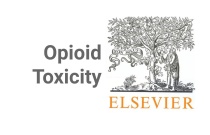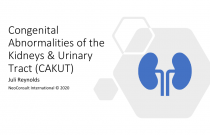Evidence-based Malaria SBCC 2: Formative Research for SBCC: Do You Know Your Audience?
Michelle R. Kaufman, PhD
John Hopkins University This eLearning series consists of 5 modules. This is module 2, entitled 'Formative Research for SBCC: Do You Know Your Audience?'. The module is presented by Dr. Michelle R. Kaufman and will introduce participants to the basics of formative research for informing SBCC programs, using examples specific t....
Provider Behavior Change Implementation Kit (PART 2): Assessing Provider Needs
Heather Hancock
John Hopkins University This section of the I-Kit provides an approach to assessing health providers’ needs, barriers and facilitators to quality service provision at the organizational, regional or national level. The approach includes a needs analysis framework and implementation tools that engage health service delivery stak....
Provider Behavior Change Implementation Kit (PART 4)
Heather Hancock
John Hopkins University Now that you have learned about provider behavior change, assessed barriers to quality Facility-based provider (FBP) service provision, and determined that SBCC has a role to play in addressing those barriers, you are ready to design an SBCC intervention for Facility-based provider (FBP) behavior change.
Management of tongue-tie
Val Finigan
The Royal College of Midwives This module will provide a basic knowledge of tongue-tie, its impact on the mother and baby relationship and feeding, and its management and treatment.
Major Depressive Disorder
Clinical Overviews
Major depressive disorder is a chronic and relapsing disease, characterized by a pervasive sad mood and the loss of pleasure in most activities (anhedonia) persisting for at least 2 weeks. These COVID-19-related materials are provided for use at no charge as part of Elsevier’s efforts to support healthcare providers and patie....
Alcohol withdrawal
Clinical Overviews
Alcohol withdrawal may occur after cessation or reduction of heavy and prolonged alcohol use; manifestations are characterized by autonomic hyperactivity and central nervous system excitation. These COVID-19-related materials are provided for use at no charge as part of Elsevier’s efforts to support healthcare providers and p....
Opioid use disorder
Clinical Overviews
Opioid use disorder is a pattern of opioid use that is problematic and leads to significant distress or impairment. A chronic, relapsing medical condition associated with compulsive drug-seeking behavior, physical dependence, and tolerance. These COVID-19-related materials are provided for use at no charge as part of Elsevie....
Opioid Toxicity
Clinical Overviews
Opioid toxicity results in severe—sometimes fatal—effects that most commonly occur after overdose, which can be intentional or accidental. These COVID-19-related materials are provided for use at no charge as part of Elsevier’s efforts to support healthcare providers and patients. They are not intended to provide medical advi....
Congenital Abnormalities of the Kidneys & Urinary Tract (CAKUT)
Dr. Juli Reynolds PhD
Neo Consult Congenital anomalies of the kidneys and urinary tract (CAKUT) are one of the most common malformations diagnosed in newborns. The pathogenesis of CAKUT is multifactorial; both specific genes and environmental factors (e.g., in utero exposure to ACE inhibitors) have been implicated in the development of CAKUT. Even t....
How to use the CRADLE VSA to detect vital signs during pregnancy (skilled health workers)
Team of specialists
Medical Aid Films A film introducing the CRADLE VSA, a new device for measuring vital signs during pregnancy. This film shows how to check blood pressure and heart rate using the CRADLE VSA. It also outlines the first steps to take if there is an abnormality in these readings. To watch the version of this film for communi....
Acute Coronary Syndrome
John Paguntalan PhD APRN-BC CCRN-K
This program will review Coronary Heart Disease, looking at prevalence, risk factors, signs and symptoms, prevention and physical activity. A review of the anatomical structures associated with CHD will be reviewed as well. A differentiation of the various types of Acute Coronary Syndrome will be discussed, including: STEMI, NST....
Take your first course
WCEA
This is the first course that you will undertake on this system. The purpose of this course is to guide you and to give you a full understanding of how the Council’s system enables you to study and record CPD activity on this platform.
Pod Cast - Is sleep apnoea associated with sleep disturbance in haemodialysis patients
Ms Ginger Chu
To review the affect that sleep apnoea has on the sleep quality of HD patients
Core Competencies in Disaster Nursing V.20
Many authors
Nurses, as the largest group of committed health per- sonnel, often working in difficult situations with limited resources, play vital roles when disasters strike, serving as first responders, triage officers and care providers, coordinators of care and services, providers of information or education, and counsellors
Mental Health Handbook for the Public During the Coronavirus Disease Outbreak
Bureau of Disease Prevention and Control of National Health Commission
Psychological intervention has always been part of our efforts to save lives.
How to Measure a Baby's Heart Rate
Sue Macdonald
The Royal College of Midwives The heart rate of the fetus and the neonate can be used, in part, as a measure of fetal/neonatal wellbeing as part of an overall assessment. When listening to the heart rate the practitioner needs to consider the rate, rhythm and regularity. The content includes heart sounds by courtesy of Dr R....
Substance Abuse During COVID 19 Pandemic
Mr WCEA Administrator
The Kenya Medical Association, the Kenya Psychiatric Association and the Clinical Psychologist Association of Kenya have come together to form the following panel of specialists in order to address mental health wellness during the COVID-19 pandemic.
COVID 19 Series: A view from inside an Intensive Care Unit
Professor Hugh Montgomery
Discussion regarding the reality of dealing with the effects of the COVID-19 pandemic in these unprecedented times. The RSM COVID-19 Series is for health professionals, by health professionals; a series of talks dedicated to give healthcare workers on the frontline, regular and easy-to-access updates from healthcare leaders....
COVID-19 Series: Policymaking on masks for the general public: evidence-based or eminence-based medicine?
Professor Trisha Greenhalgh and Professor Sir Simon Wessely
Discuss the evidence surrounding face masks, policy, innovation and change in the response to COVID-19. Consider making a donation to the RSM: www.rsm.ac/donation All views expressed in this webinar are of the speakers themselves and not of the RSM
Precision medicine implementation and research-practice partnerships: implications of measurement scale differential item functioning
John J. O. Mogaka,Moses J. Chimbari
Recent advances in omics technologies offer greater understandings of how gene-environment interactions affect health and pathological processes. Omics-based biomarkers (OBMs) resulting from advances in biomedical technologies form the basis of precision medicine (PM), an approach to medicine that emphasizes predictive, preventi....
Effects of aflatoxin B1 on the submandibular salivary gland of albino rats and possible therapeutic potential of Rosmarinus officinalis: a light and electron microscopic study
Bassant Ashraf,Dahlia Ghazy,Mohamed Shamel
Aflatoxins are naturally-occurring mycotoxins produced by the fungi. t Of the 20 types, Aflatoxin B1 (AFB1) is considered to be the most toxic. AFB1 toxicity was reported to lead to severe health issues such as cancer, growth retardation, and immunosuppression. In this regard, the International Agency for Research on Cancer clas....
Malaria management in children with fever in rural Sierra Leone. Has anything changed after the Ebola outbreak?
Joseph Bangalie Sesay,Olga Denisiuk,Katrina Hann,Rony Zachariah,Francis Lionel Moses,Umaru Dumbuya
A cross-sectional study conducted in 2017. Although the post-Ebola period was included in this evaluation, it was for a relatively short period (six months) which was probably too soon to gauge health system recovery. At the primary healthcare level in the same district and among children under five, we thus performed a new anal....
Screening tuberculosis patients for diabetes mellitus in a routine program setting in Kampala, Uganda: a cross-sectional study
Joseph Nsonga,John Paul Dongo,Frank Mugabe,Gerald Mutungi,Richard Walyomo,Christopher Oundo,Sarah Zalwango,Daniel Okello,Simon Muchuro,Riitta A Dlodlo,Yan Lin
Although significant progress has been achieved in tuberculosis (TB) care and prevention during the past decades, TB remains a major public health problem and is responsible for more deaths than any other single infectious disease worldwide. Along with socio-economic development, urbanization, dietary and lifestyle changes, the....
HIV treatment and monitoring patterns in routine practice: a multi-country retrospective chart review of patient care
Baba M Musa,Everistus Ibekwe,Stanley Mwale,Daniel Eurien,Catherine Oldenburg,Gary Chung,Richard F Heller
In addition to choice of appropriate drugs, best practice management of patients with HIV requires monitoring response to treatment and disease progression. This includes tracking clinical immunological, and virological data on patients at diagnosis and on follow-up. There is a rich literature guiding HIV treatment, and guidelin....
Efficacy of the combination of crude extracts of Solanum nigrum and Plumbago capensis on Leishmania major
Christine N. Mutoro,Johnson Kinyua,Joseph Ng'ang'a,Daniel Kariuki,Johnson M. Ingonga,Christopher O. Anjili
Leishmaniases are diseases caused by. Studies conducted by. After increasing unresponsiveness to most of the monotherapeutic regimens, combination therapy has found new scope in the treatment of leishmaniasis. The findings of n


















